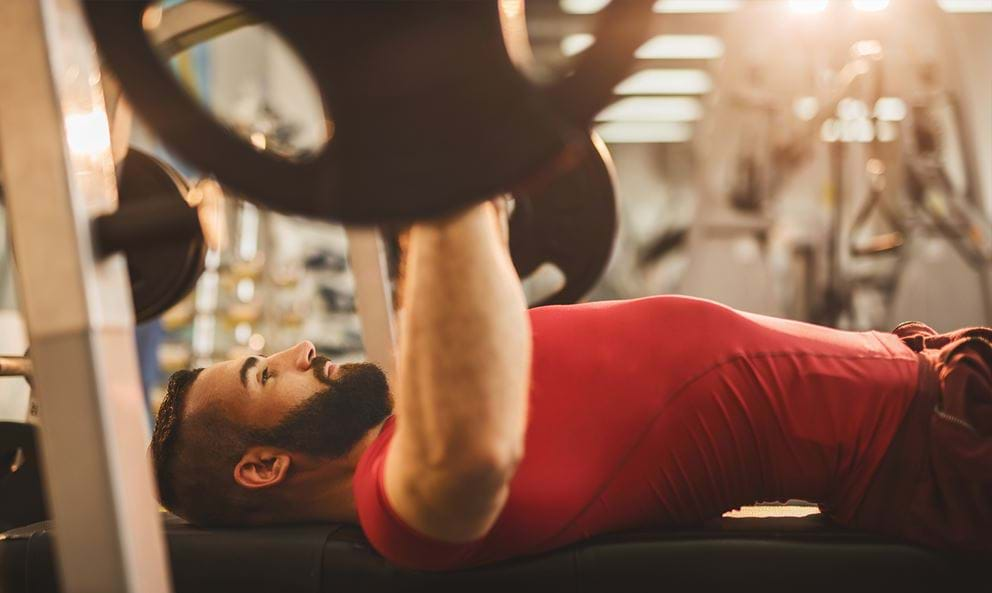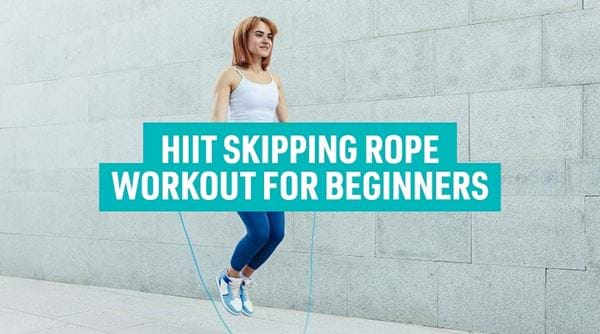A Guide to Getting on the Bench Press

“Hey bro, how much do you bench?”
There’s a reason why the bench press has been used as the gold standard for strength-bragging for if anyone can remember. Sure, other exercises like the squat or deadlift may do a better job at giving you a full body workout, but there’s little you can do in a weight room that’s more satisfying than successfully pressing a loaded bar up off your chest.
Here’s an introduction to the bench press; why you should do it, and how to do it properly.
Why You Should Bench
It works (just about) the whole upper body
Feeling like a weightlifting-god aside, the bench press does a fantastic job of activating the various muscles of the upper body.
The primary target muscles for the movement are the triceps and pecs, though benching will also give your front deltoids a great workout, as well as heavily engaging your forearms.
That’s not all, though. The tension generated by the exercise — especially during the early positive, and negative phases of the lift, will recruit the lats heavily while also having an impact on the biceps and traps.
If you’re benching properly, even your core will be engaged to a good degree.
It’s perfect for long-term heavy lifting
Not only does the bench press do a great job of activating the muscles of the upper body, but it’s also a perfect exercise for long-term, heavyweight progressions — which are exactly what you want if strength building is your primary goal.
Other chest presses using equipment such as dumbbells or kettlebells do a great job but they simply have a clear cut-off point in terms of progressive overload. There are few dumbbells out there which are heavy enough to compete with a moderately well-loaded barbell.
And there are few lifters out there who’ll manage to position and press those ultra-heavy dumbbells at anywhere near their bench press 1-rep max.
When it comes to long-term, progressive strength training, the barbell bench press is at a clear advantage.
How to bench properly
Benching isn’t quite as straightforward as it might seem to the uninitiated. There are certain rules you should follow when performing the exercise in order to get the most out of it and to move the most weight you can, as safely as possible.
The fundamentals of good bench-press form are:
- Grab the bar with a slightly wider than shoulder-width grip and squeeze it hard during the exercise. This increases muscular tension and helps the lift. It’s also safer than a “loose” grip.
- Make sure that your forearms are in a vertical line. Not leaning forward, not leaning back.
- Position yourself with your upper back and hips firmly on the bench, your feet firmly on the floor, and a slight arch in your lower back.
- Flex your lats and abs, and squeeze your shoulder blades together as you lower the bar to your sternum. This should take 2-3 seconds (studies have shown1 that more time under tension leads to greater strength and muscle gains. It’s safer, too).
- Keep your elbows at a 45-degree angle while lowering and pressing the bar. They shouldn’t be right against your body, and they shouldn’t be flared out all the way to the sides. This should take 2-3 seconds.
How to bench safely
Now that you know how to bench effectively, with proper form, it’s time to look at how to do the exercise safely. Because while the bench press is a great exercise, make no mistake: it can kill you.
Dropping a heavily loaded barbell on your chest, face, or neck, is something that you want to avoid at all costs.
Have a spotter
One of the most important safety procedures you should follow when benching, especially if you’re handling heavy weight, is to have a spotter with you.
A spotter is someone who can help you with the weight if you get into trouble. If your arms are shaking and you’re about to drop the bar and pin yourself, it’s the spotter’s job to grab it and help you re-rack it.
It’s always best to have a spotter you know and trust, but on short notice, just ask any muscular guy in the gym. People are usually happy to help.
Bench in the squat rack (with safety bars)
If you don’t have a spotter, or if you’re maxing out, always bench inside the squat rack with the safety spotter bars in place to stop the barbell before it reaches your chest.
There’s nothing too complicated about this setup, simply drag a bench into the squat rack when it’s free, set the spotter bars to the correct height, then load up the bar and start benching.
Never, ever use the “suicide grip”
“Suicide grip” refers to a grip on the barbell where the thumbs are tucked back instead of wrapped around the bar. Some elite-level benchers like to do this, and it’s caught on in some places.
Don’t do it. It’s called the “suicide grip” for a reason — it’s far too easy for the bar to roll out of your hands and cause you serious harm.
Keep the press slow and steady
When lifting, you want to generate tension in your body and then steadily press and lower the weight. Don’t try and “throw” it up over you in a sudden burst of movement. Not only can this damage your joints, but it does a poor job of working the target muscles. More importantly, you may find that you’ve got enough “thrust” to launch the weight up, but then lose control halfway.
1 https://www.ncbi.nlm.nih.gov/pmc/articles/PMC3285070/


